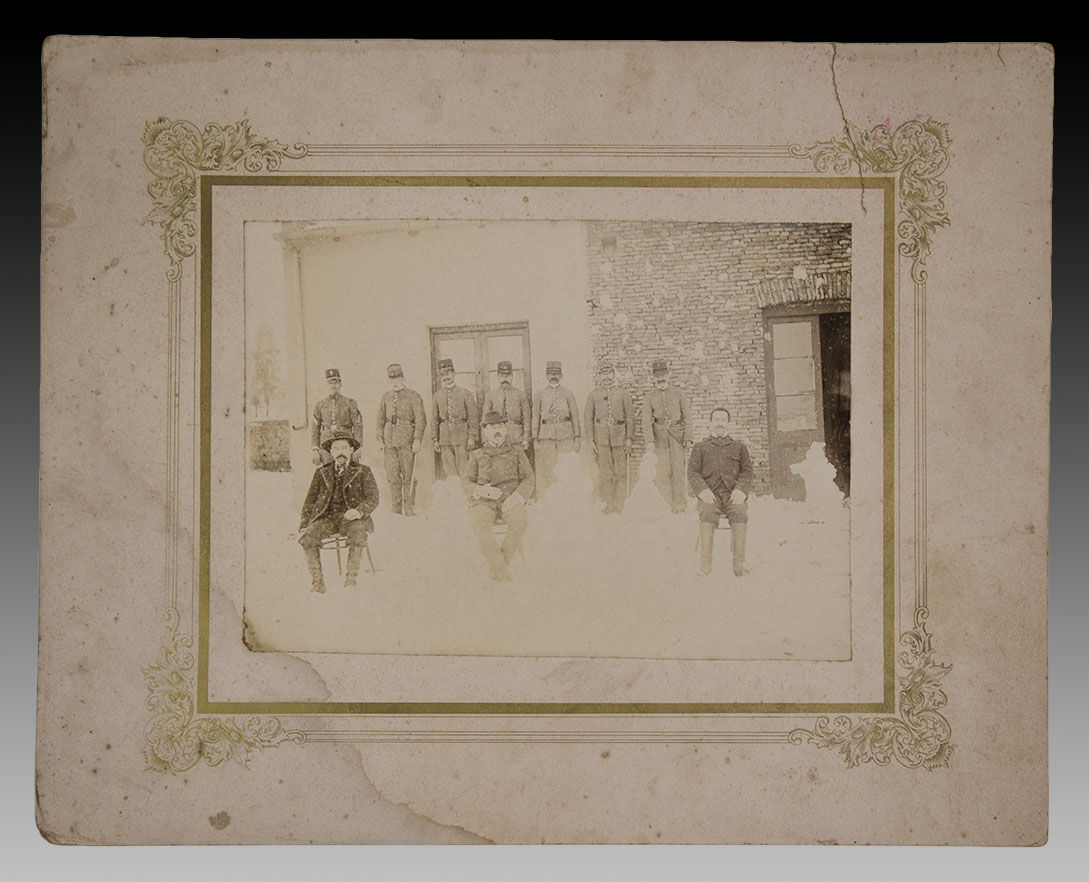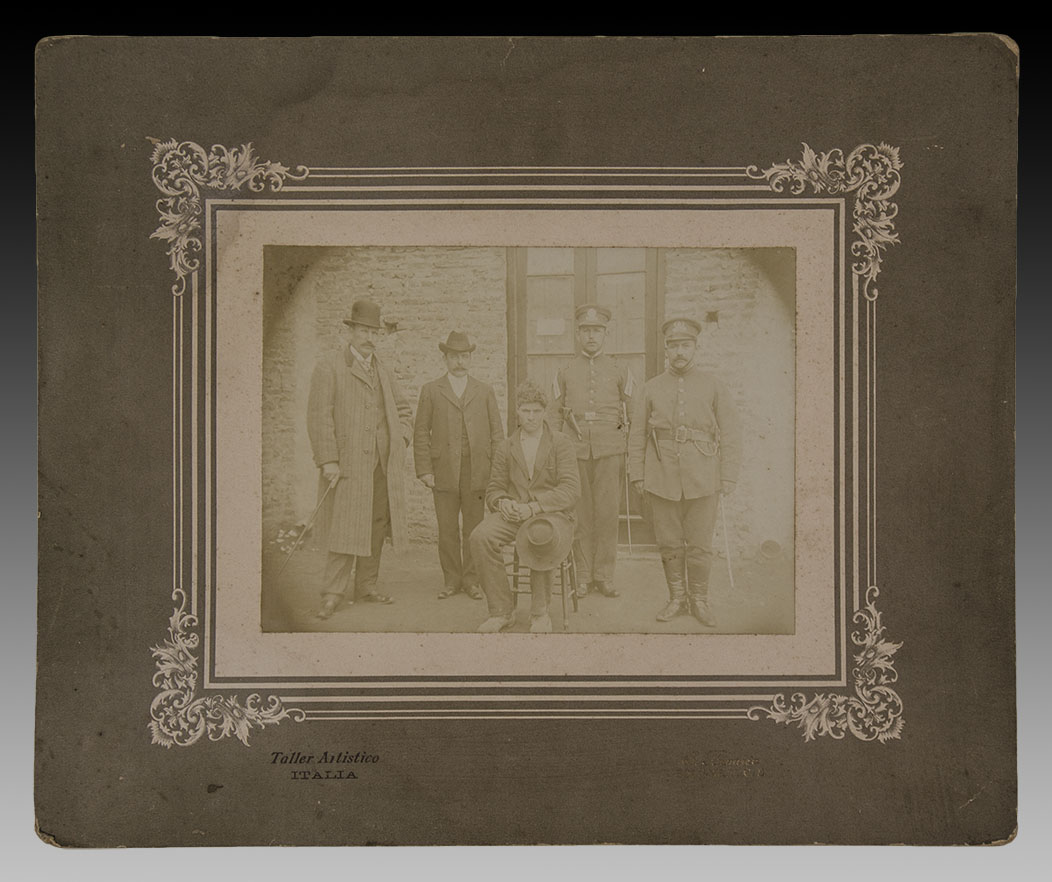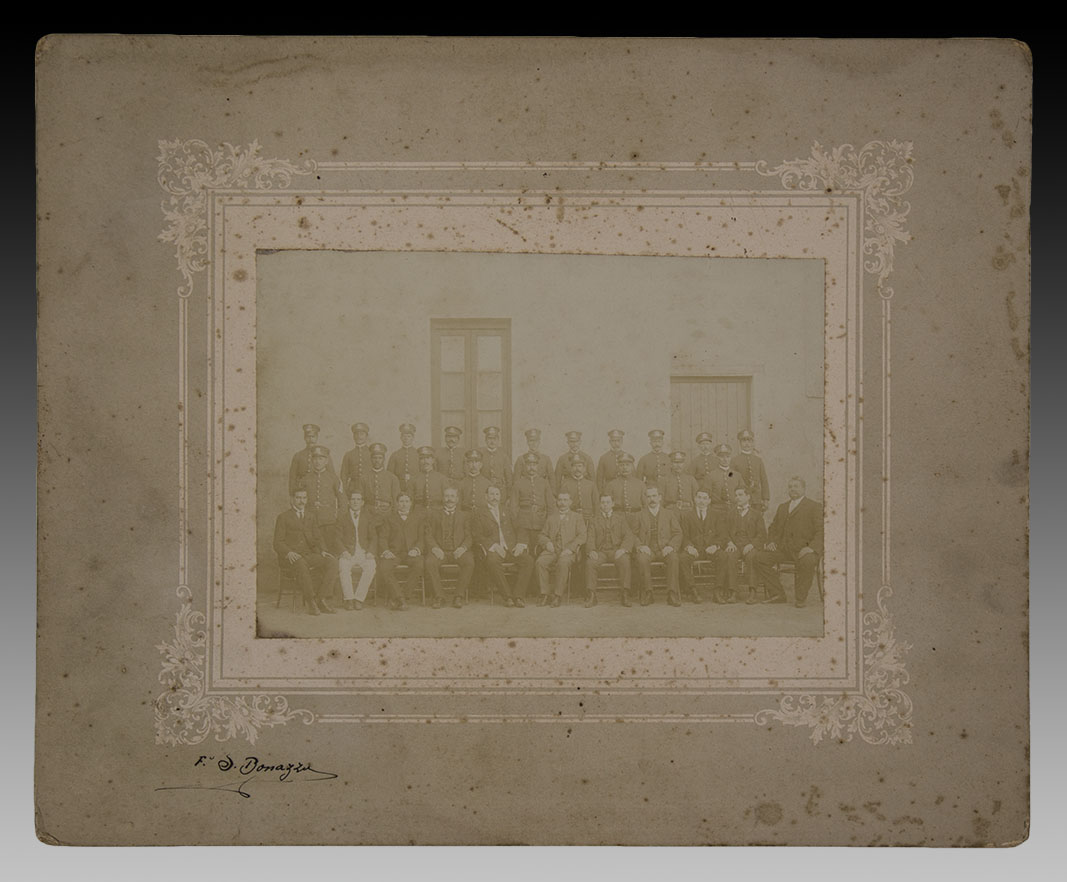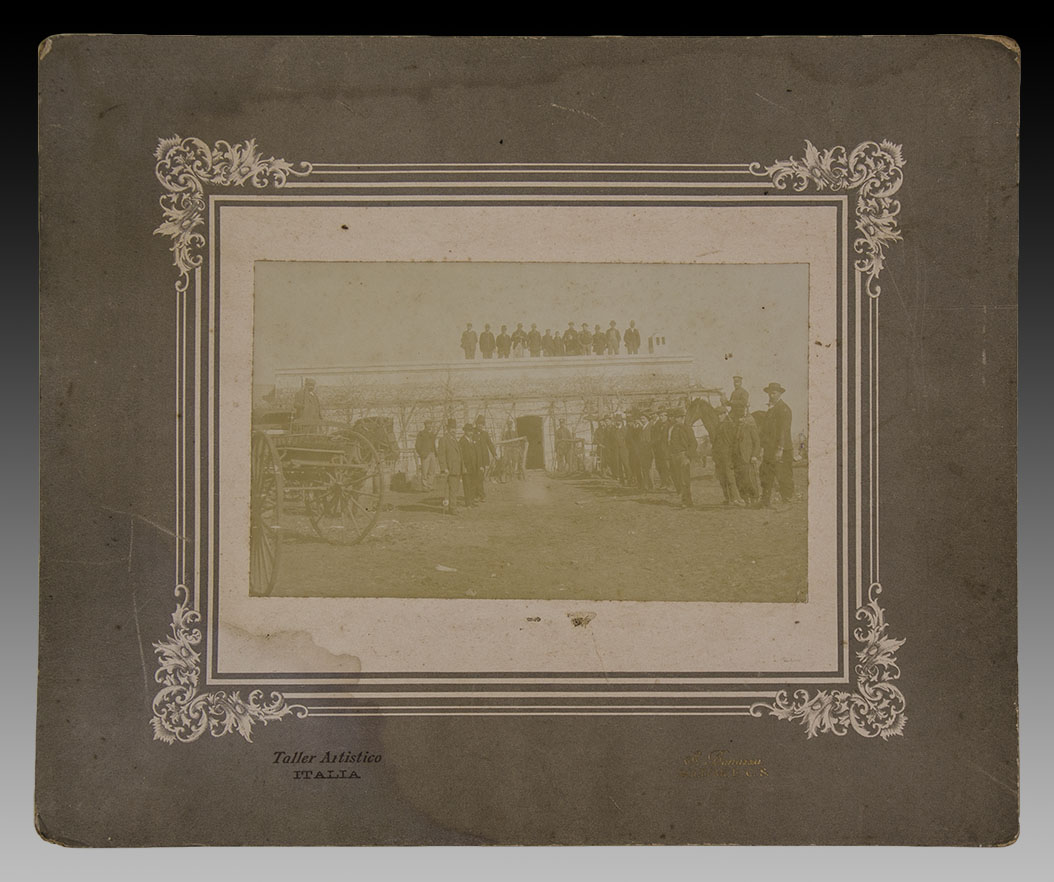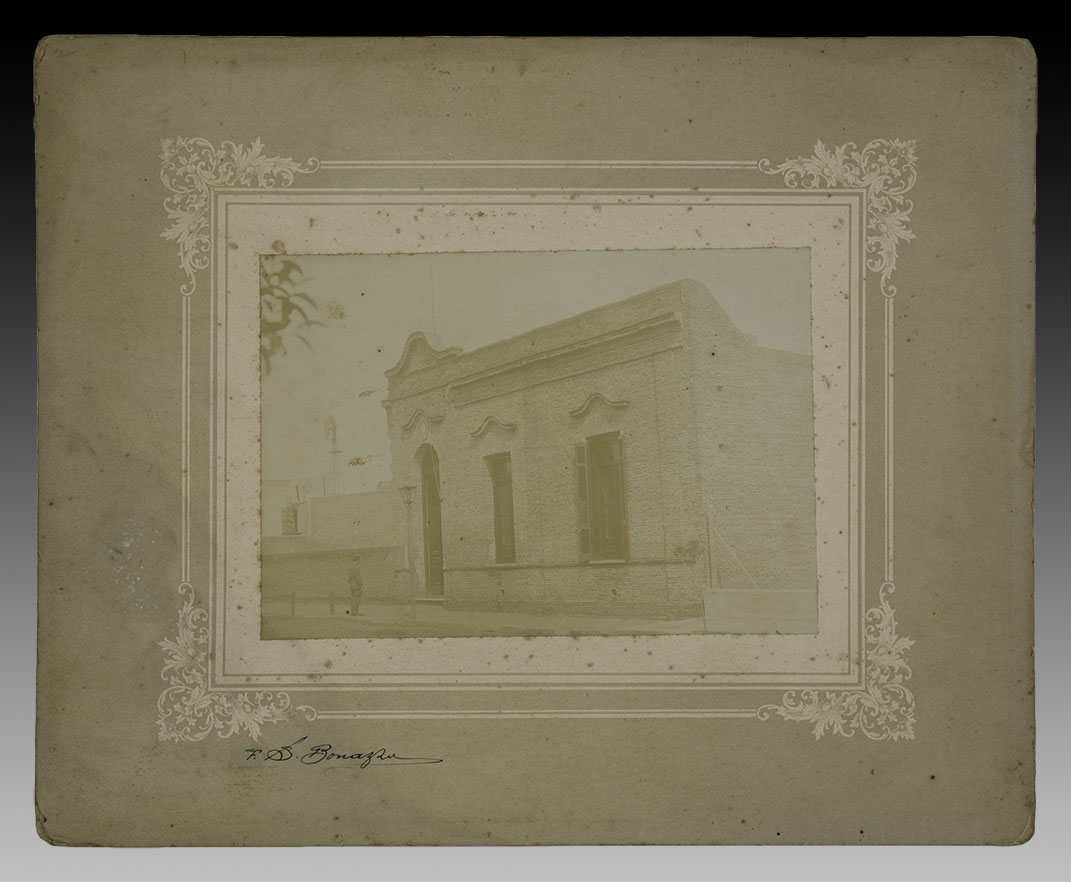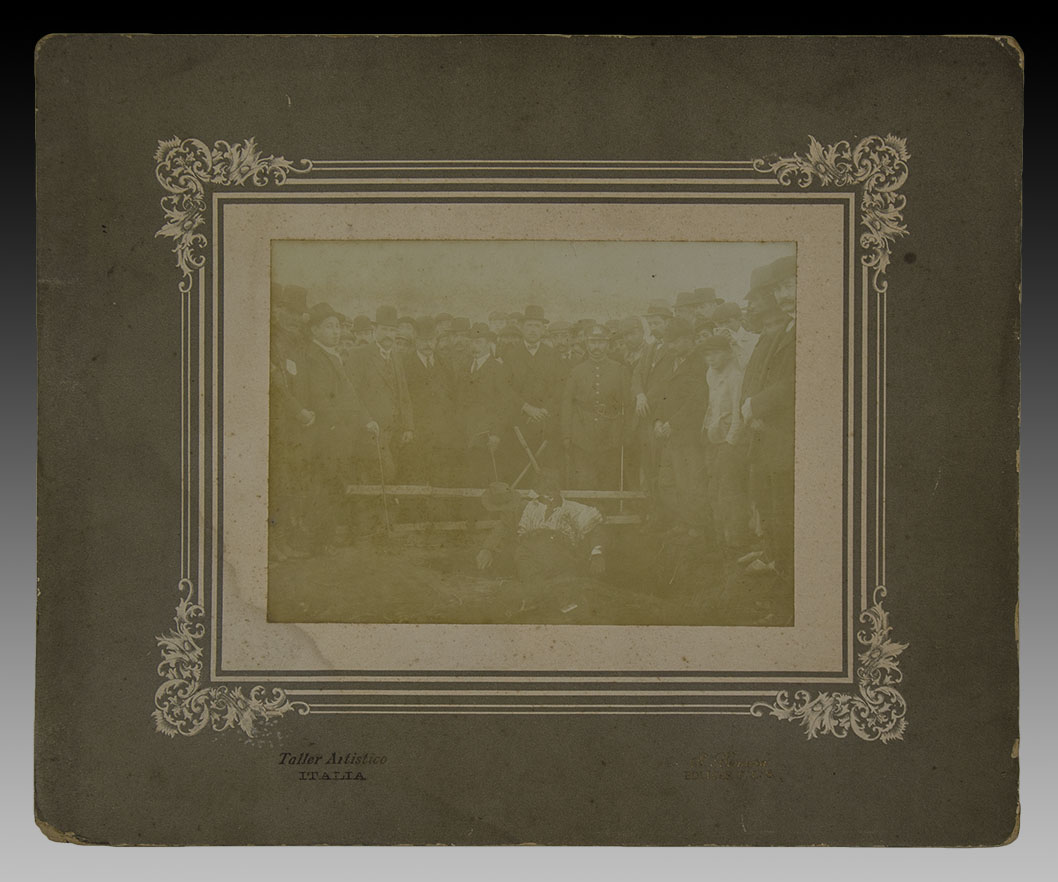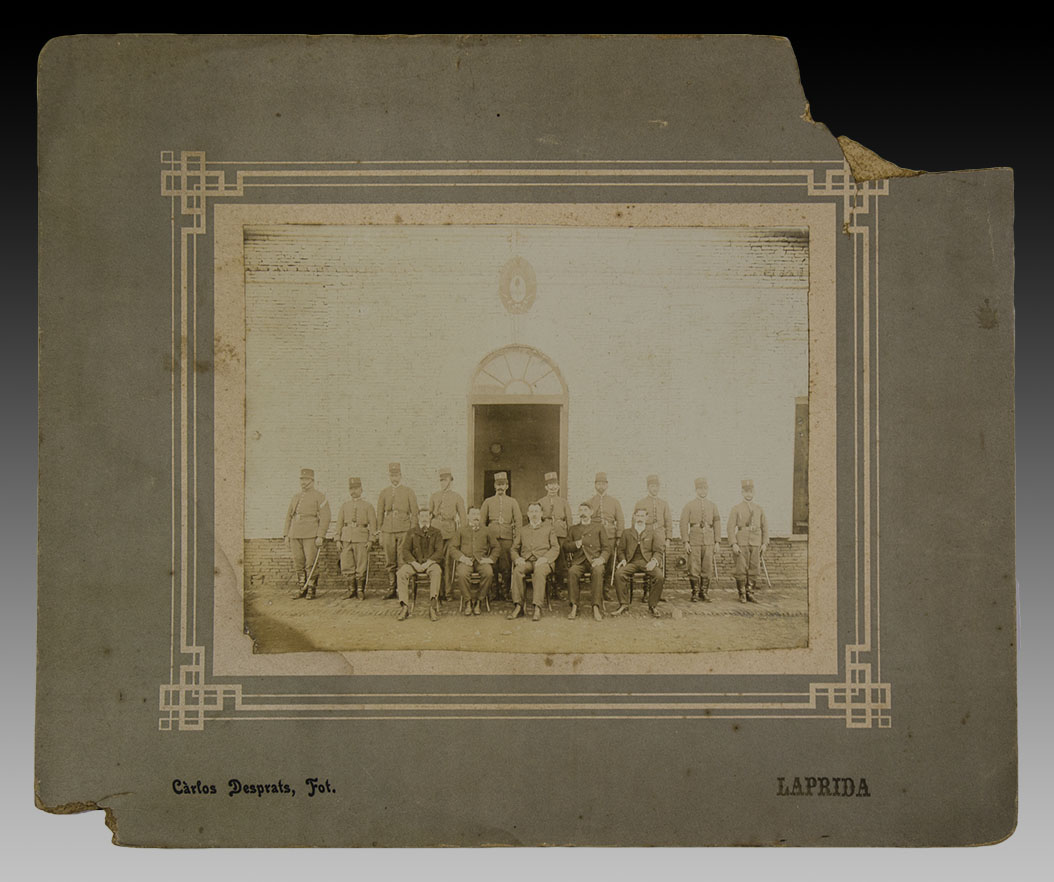BONAERENSE (FROM BUENOS AIRES PROVINCE) POLICE PHOTOGRAPHS
The order and its deviations. Bolivar F.C.S. and Laprida. Buenos Aires province. circa 1910.
Collection of eight police photographs from Buenos Aires. Vintage gelatin silver prints in light sepia tone. Measurements, around 15 x 20 cm. All glued on their period cardboard supports; six of them made by Salvador Saverio Bonazza, with advertising on the lower edge of the secondary support through two wet stamps on black ink; on the left: "Italy Art Workshop" and on the right: "S. Bonazza". The seventh cartoon indicates in legend printed on black ink "Cárlos Desprats, Fot" (left) and "Laprida" (right). An eighth photograph completes the set, without indication of authorship. The works appear somewhat faded and with various suffering on the cardboard.
The first photograph is of the plein air type and records the arrest of an important criminal, who is found seated and with handcuffs and metal shackles on his hands and feet; Two plainclothes and two uniformed policemen fan out around him, all facing Bonazza's camera. The second, a sequence of the previous one, shows the same prisoner posing in the foreground with his hat on and where the metal handcuffs are clearly visible. This image bears a certain parallelism with the pioneering police photographs taken in the town of Goya (Corrientes) around 1876 by Benitez y Pagés and where two death row inmates are heavily handcuffed.
In the third image, a group of individuals -including the police forces- poses in front of the body of the deceased, extracted from his grave, where it was surely hidden after his death. The fourth image, also made by Bonazza outdoors; It shows us in front, a material construction with a large number of people gathered -even more than a dozen men standing on its roof-, where the participation of the police forces stands out, one mounted and another two uniformed guarding the door of the building.
The fifth photograph corresponds to the well-known photographer Carlos Desprats from Laprida (Buenos Aires) and was taken in front of the police station of that town. Desprats arranged that symmetrical group portrait, placing five civil servants seated on Thonet chairs at the front and center of the ensemble. Behind them, ten uniformed policemen of different ranks stand at attention, with their sabers. The police building boasts the institution's classic sheet metal shield on the door and the front is made of exposed brick. Also the sidewalk is built of bricks. Around 1928, the Kraft Yearbook informs us that Laprida had two photography professionals, they were Norberto Desprats and José Ferri.
Two other photographs of Bonazza are offered; in the sixth, a policeman is seen standing guard at the door of a police station in the Italianate architectural style, and in the seventh, a plein air record of a large police formation in the inner courtyard of a building. It is a collective portrait in which Bonazza placed 11 civil servants and 20 uniformed police officers seated in front, perfectly aligned in two rows.
In the eighth register, a police detachment poses in front of two adjoining buildings, one on the left with its plastered wall and the other with exposed bricks. Placing seated -on elegant Thonet chairs- and in the foreground, the three chiefs or authorities dressed in civilian clothes, two of them with riding boots. Behind them he deployed the other troops, seven policemen in martial formation and with their regulatory uniforms, kepis and large sabers. All the men sport fashionable mustaches. The registration was carried out on a cold and windy winter day.
Between the end of the 19th century and the beginning of the 20th, the practice of professional photography in Argentina was mainly in the hands of Italian immigrants; they accompanied with their cameras the saga of millions of countrymen immersed in the long-awaited dream of "Fare l'America".
In 1906, the young Salvador Saverio Bonazza (1883-1939), a native of Palmi (Reggio Calabria), landed in Buenos Aires. His passport already indicated his status as "Photographer" and, as such, he works for a time in the city of Buenos Aires. He soon stands out among his colleagues and in the year 1910 he participates in the Centennial International Exhibition with a photographic album about the city of Balcarce, where he obtains the second prize (silver medal). The following year he redoubled the bet with the same work and won the bronze medal at the International Exhibition of Industry and Lavoro (Turin).
His work fluctuates between the towns of Balcarce and Bolívar, in the latter he opens the well-known atelier "Taller Artístico Italia", a very appropriate name since he cultivated painting, drawing and sculpture with equal talent. As a journalist he founded the weekly magazine "Átomos" (1917) and two years later "El Diario"; he even dabbled in the nascent cinematography of the area by building and running the Cine Miter.
He was a photographic correspondent for several Buenos Aires magazines. Because of his work, he moved around the area with a Ford T closed van, with its sides turned into large advertising posters dedicated to: "S. Bonazza Photography." On January 19, 2020, I published in the "Memoria Viva" section of the Viva magazine of the Clarín newspaper, an article about this pioneer illustrated with the image of that vehicle in Sierra del Volcán, Balcarce.
In addition to the classic social photographic records such as baptisms, first communions, weddings, individual or couple portraits, S. Saverio's cameras were also at the service of the necessary shots of police events, so many times requested by the judicial power.
Abel Alexander
President of the Ibero-American Society for the History of Photography.
| AUTHOR | S. S. BONAZZA - C. DESPRATS |
|---|
Are you interested in selling some works?
Send us an email briefly indicating
which works you intend to put on sale, and we will respond. click here
Subscribe to our newsletter to be updated.
Check our Newsletters